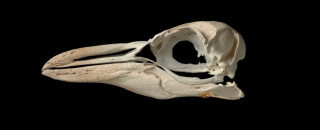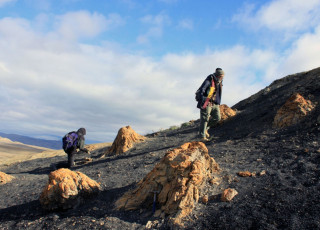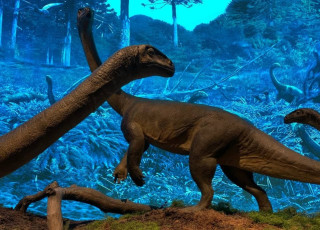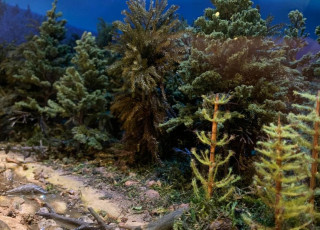Polar DinoFest: Dan Ksepka
By Riley Black
At first blush, penguins may not seem to have very much in common with the likes of Velociraptor. But, as Bruce Museum paleontologist Dan Kespka notes, these flightless birds have more in common with some of our Mesozoic favorites than might be immediately obvious. "Penguins are birds, and birds are dinosaurs," Ksepka says, "so if we want to talk about polar dinosaurs, why not include some living ones?"
To date, scientists have recognized 17 species of living penguins. These birds range from the Equator to Antarctica, almost entirely encompassed by the Southern Hemisphere. But today's penguins are just part of a bigger story spanning more than 55 million years, a tale that includes penguins tall enough to look you right in the eye.
"The thing that really keeps me interested in penguins is that they are so different from other birds," Ksepka says. The wings of penguins are more like flippers, their feathers are somewhat like scales, and many live in harsh environments. And they've been doing so for a very long time. "Penguins have a really great fossil record compared to most types of birds," Ksepka says, and new searches at fossil sites in the Southern Hemisphere has unveiled an entire parade of fossil penguins no one has ever seen before. The recently-described fossil penguin Kumimanu, for example, stood over five feet tall and weighed more than 200 pounds!
But there's more to the story than new bones. Ksepka and colleagues have been using new technologies to learn more information than ever before about fossil penguins, from extracting clues in ancient DNA to discerning what colors some prehistoric penguins were. "There are a lot of technologies available today that would not have been available a few decades, or even a few years, ago," Ksepka says. These techniques can even be used on historic specimens that were collected long ago, gleaning new clues from old finds. "It's really fascinating to be able to re-visit specimens that might have been collected 50 or even 100 years ago and learn something new about them with a new technique," Ksepka says.
Click Here to Explore More of NHMU's Polar DinoFest
Riley Black is the author of Skeleton Keys, My Beloved Brontosaurus, Prehistoric Predators, and a science writer for the Natural History Museum of Utah, a part of the University of Utah in Salt Lake City. Our mission is to illuminate the natural world and the place of humans within it. In addition to housing outstanding exhibits for the public, NHMU is a research museum. Learn more.



